How to do a dumbbell row properly
Top fitness expert explains how to do a dumbbell row properly, what muscles it works and common mistakes to avoid

Wondering why it’s worthwhile learning how to do a dumbbell row properly? The classic muscle-building exercise plays a major role in the fitness routines of many gymgoers and it’s said to help increase back strength and posture. However, even the most experienced weightlifters can be prone to performing this exercise without proper form. So, if you’re looking for how to do a dumbbell row properly, you’ve come to the right place.
We spoke to Calum Sharma, personal trainer and Head of Exercise Science at The Body Lab in London for the lowdown on not only how to do the perfect dumbbell row but also what muscles this exercise works, common mistakes to avoid when doing it, and the best dumbbell row variations for when you want to mix up your routine a bit.
Planning to perform your dumbbell rows at home? Then be sure to have a gander at our best adjustable dumbbells guide and find the top equipment for the job.

Calum Sharma is the Head of Exercise Science at The Body Lab in High Street Kensington. With a BSc in Sport & Exercise Science and a Masters by Research in Sports Biomechanics, Sharma fell in love with sports as a child and that has been a driving force for his career ever since. Sharma’s expertise in training lies in optimizing people's human biology for performance, be it an athlete at the top level or a new parent wanting to play with their children without worrying about putting their back out.
What muscles do dumbbell rows work?
The single-arm dumbbell row is a fantastic exercise to perform anatomically, according to Sharma, as it recruits a whole host of muscles that are crucial for great posture and shoulder health.
“The primary movers in this exercise are the lats, rear delts, mid-lower traps, and rhomboids alongside smaller muscles that help assist the movement, too,” says Sharma.
“These include the biceps, infraspinatus, teres major and minor as well as numerous forearm muscles that stabilize the shoulder and help with the gripping of the actual dumbbell itself.”
Sharma adds that posture and shoulder health are two huge additional benefits you’ll get from performing this exercise as well as being able to grow a strong and functional posterior chain.
Start your week with achievable workout ideas, health tips and wellbeing advice in your inbox.
“This leads to a reduction of pain from sitting and working at a computer for prolonged hours as well as lowering the incidence of injury to our shoulders, neck, and spine, which are all supported by the muscles used during this exercise.”
How to do a dumbbell row
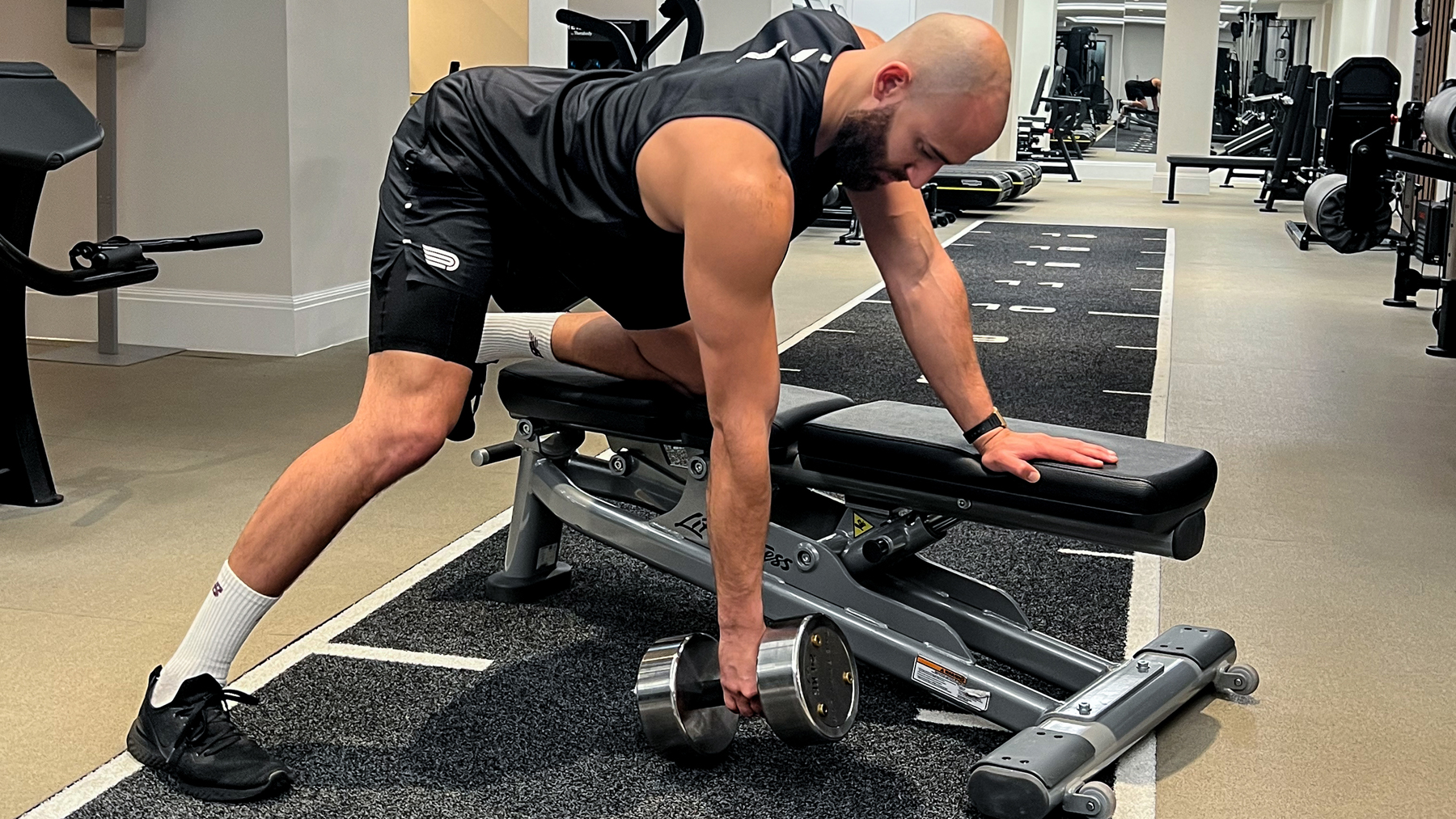
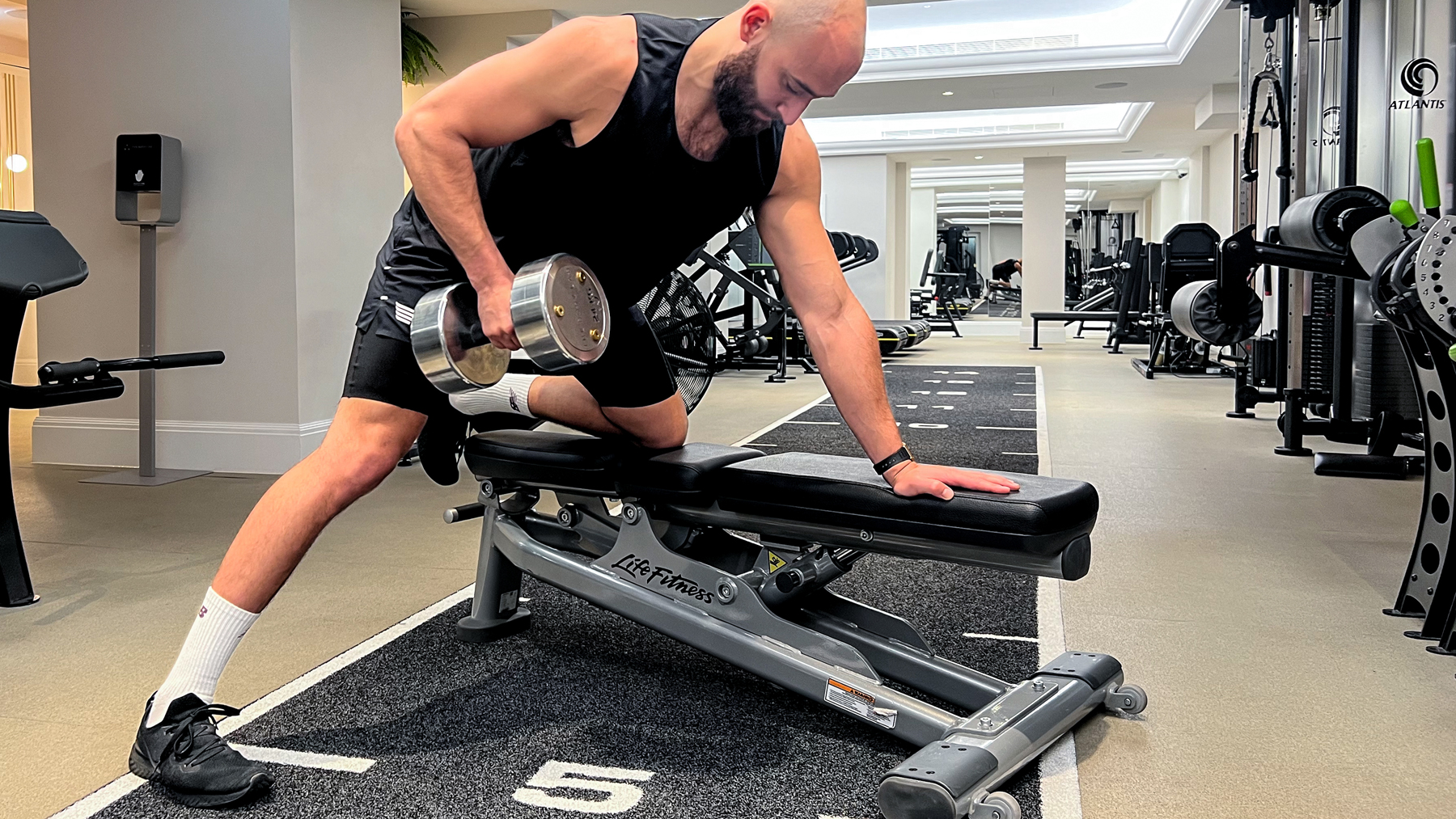
1) Before even attempting to lift a dumbbell, you must ensure you’ve set up right.
“I’m sure you’ve heard the phrase ‘you can’t build a house on poor foundations, and this is exactly why your setup must be solid,” says Sharma.
As you can see in the first image, he is using three points of contact to create a wide base of support for the dumbbell to be pulled from.
“This completely takes balance out of the equation and puts us in a strong biomechanical position to execute our row. We want to follow the line-of-pull of our lats, therefore pulling diagonally is optimal when performing this exercise.
2) “Creating space for the dumbbell to be pulled towards our hips is key, too, as often people pull vertically into the shoulder and this can create a whole host of problems that we’ll go into a little later.”
3) Sharma also has the dumbbell angled slightly to encourage a diagonal line-of-pull. This is because you want your shoulder to be protracted (when the scapula moves away from the spine and the shoulder moves forward) at the bottom of the movement.
“This puts a great stretch on your lats so that they are initiating the movement and you are not overworking your biceps or upper traps,” he adds.
4) To perform the exercise, pull the dumbbell into your hip to the point that the shoulder does not internally rotate, and you can keep the spine in a neutral position (as shown in the second image). This is your concentric action.
5) Next comes the eccentric (or lowering) part, which is crucial for optimizing the efficiency of this movement.
“Often, people just drop the weight and lose all tension in the exercise, when in fact, this is where we will break down the muscle the most to elicit growth,” explains Sharma.
Follow the same diagonal motion as the concentric action but slow the movement down and control the dumbbell all the way to the floor. This concentric action should be for around one second and the eccentric action for at least two seconds.
“This tempo will create a good amount of time under tension (TUT) which is key when wanting to elicit hypertrophy (muscle growth).”
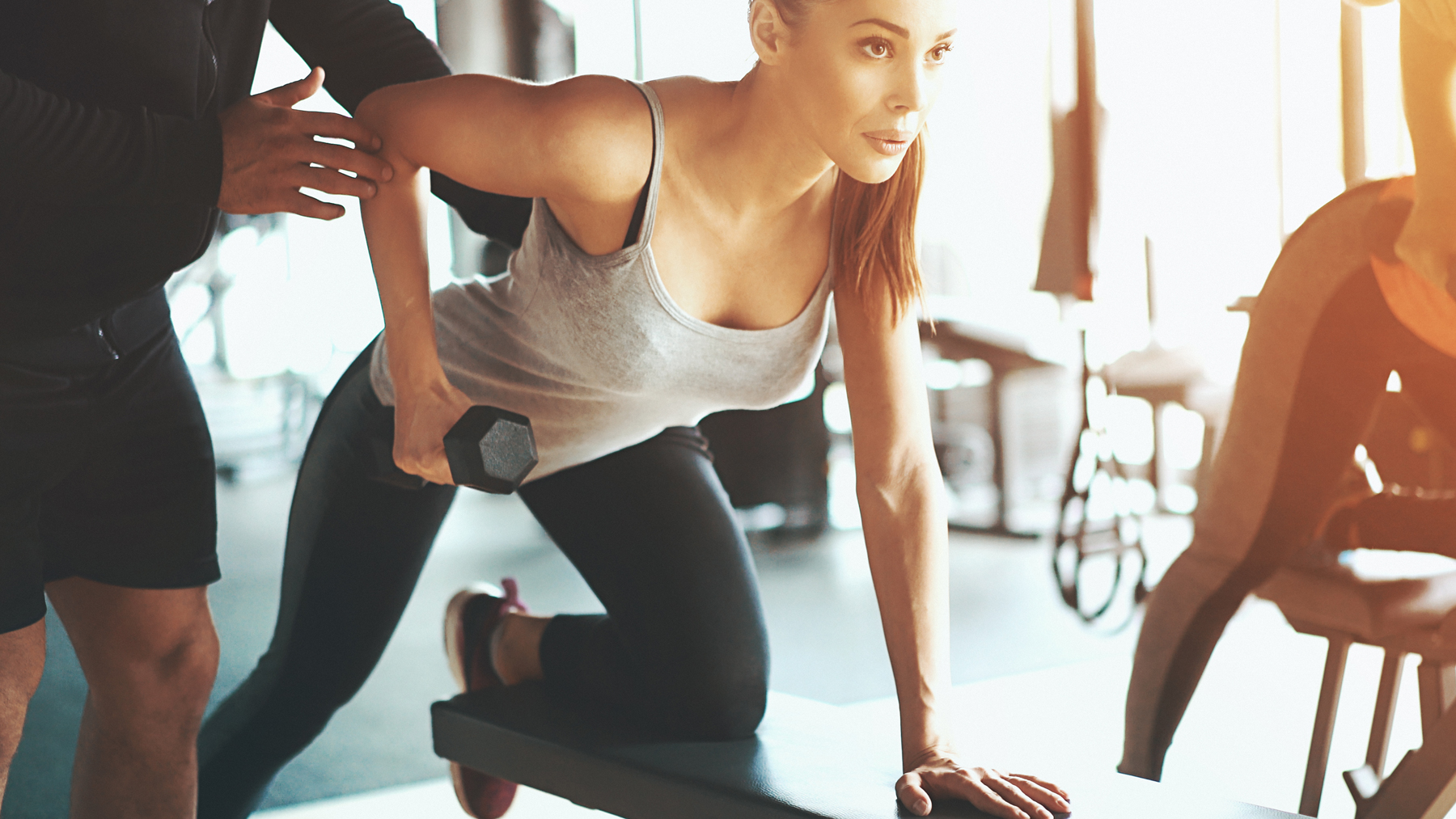
Tips and common mistakes to avoid
The single-arm dumbbell row is an exercise that people can easily get wrong. Here are some tips for best practice, and the common mistakes seen in the gym to help you avoid injury due to poor form.
As we mentioned earlier, poor form usually starts with the wrong setup, or more precisely, foot position. This is something you need to correct right away, explains Sharma:
“Having your foot close to the bench creates a narrow base of support and puts the hips above the shoulders. This makes balancing an issue especially if you’re planning to go heavy.
“If the hips are too high, the dumbbell will become more difficult to row diagonally and we will overuse muscles that will cause neck and shoulder pain.”
He advises going wide with your stance and keeping the hips and shoulders in line to start with.
Another common mistake Sharma sees when people perform this exercise is pulling the dumbbell into the shoulder, vertically.
“This encourages internal rotation (rounding) of the shoulder, and we are trying to eliminate this to allow the shoulder girdle to retract and protract in line with our lats.”
How heavy should I lift for a dumbbell row?
'What dumbbell weights should I use?' is a common question. As with any free-weight apparatus, you should always use a weight that you can safely and efficiently lift.
“I often advise my clients to remove all the numbers from their weights so they can just feel what works for them,” says Sharma. “Often, we get caught up in how much the person next to us is lifting or what that influencer was moving for 10 reps, and this is all irrelevant.
“Choose a weight that you can follow the description above with perfectly and once that becomes too easy, gradually move upwards.”
If you have specific goals involving strength, hypertrophy, or endurance then you’ll need to work to those rep ranges for which the weight will have to be adapted. These, according to Sharma, are as follows:
- For strength, perform anywhere between 2-6 reps for 3-5 sets
- For hypertrophy, perform 6-12 reps for 3-4 sets
- And for endurance, perform 12-20 reps for 2-3 sets
For each category, you will want to use a weight that you can only just lift in the last two or so sets.
“Perfect form should be executed for at least the first two sets and then you can up the weight to encourage muscle failure at the end of the final sets,” Sharma adds.
Dumbbell row variations
While there are a plethora of great ways to row a dumbbell, here are some of Sharma’s favorite variations:
Chest-supported row


This is a great exercise to help keep your spine neutral and “work on your row technique and line-of-pull”, says Sharma.
1) To perform it, grab a bench and set it at an incline so you’re in a position where the dumbbells aren’t touching anything when in a resting position.
2) Pull the dumbbells diagonally towards you and make sure not to go past the bench, then return to the starting position. Use the same tempo as mentioned in the single-arm row exercise above.
Incline single-arm row
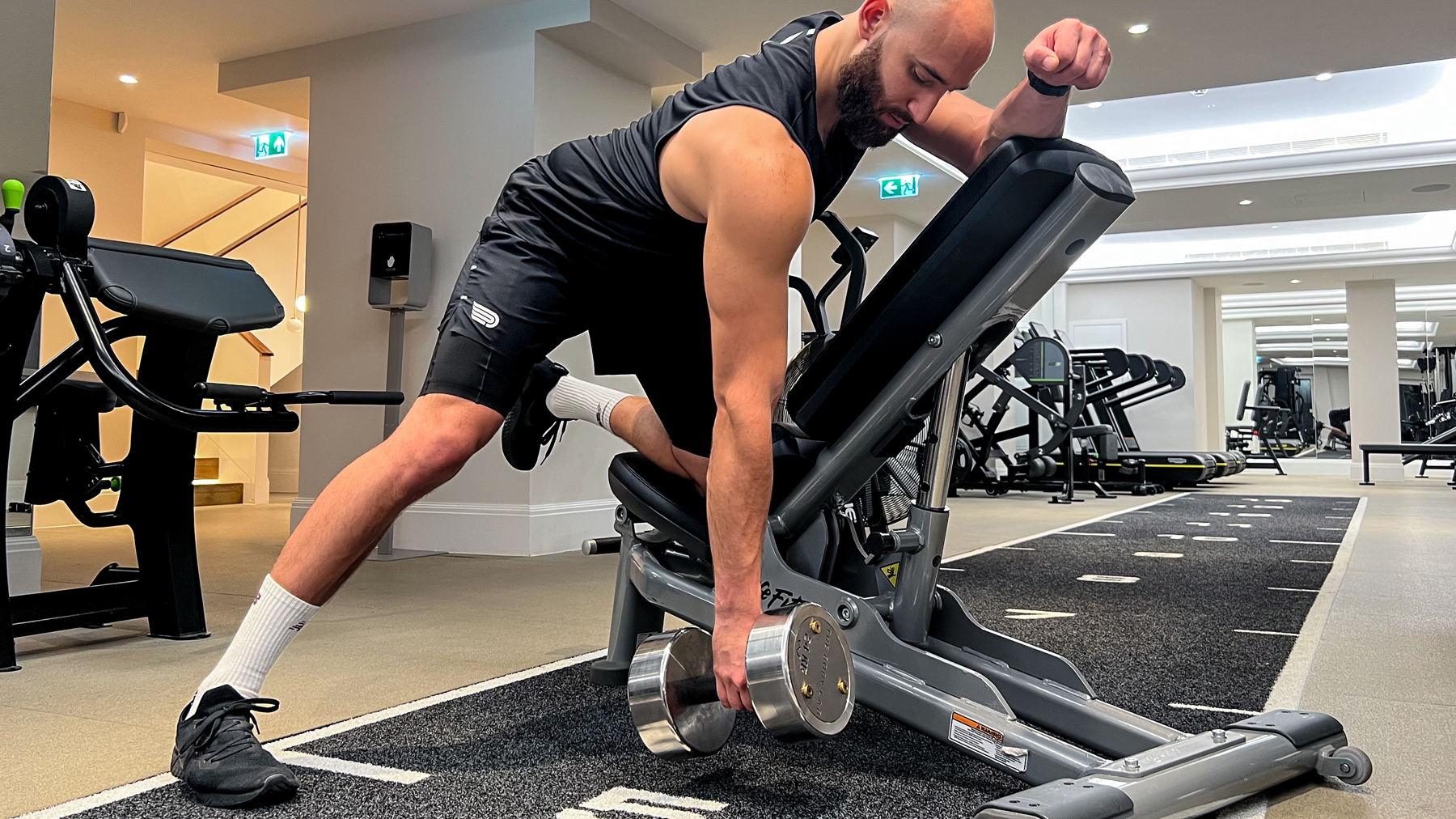
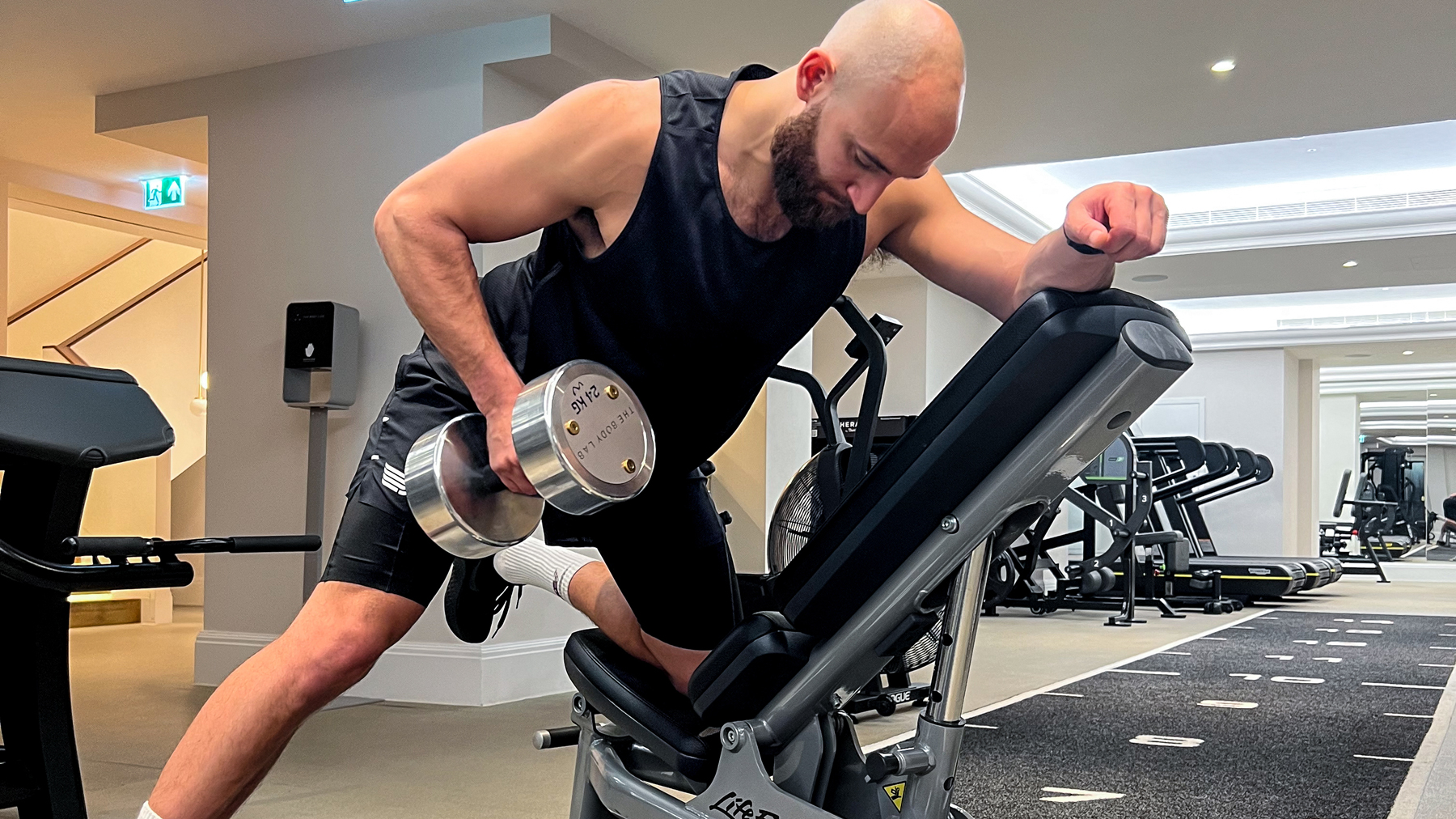
This exercise is “a fantastic way to work on your diagonal line-of-pull” while helping to boost your efficiency in the standard single-arm row exercise, Sharma says.
1) To start, have your forearm at the top of an inclined bench with your knee at the other end and the foot out wide, creating a stable base.
2) Row the dumbbell up into the hip, retracting the shoulder at the start of the movement and protracting at the end.
Try to keep the torso as still as possible when performing this exercise,” Sharma adds.
“If you’re having to rotate or bounce your torso to move the weight, it’s too heavy. Rerack it along with your ego and pick up a lighter weight.”
Bent over row
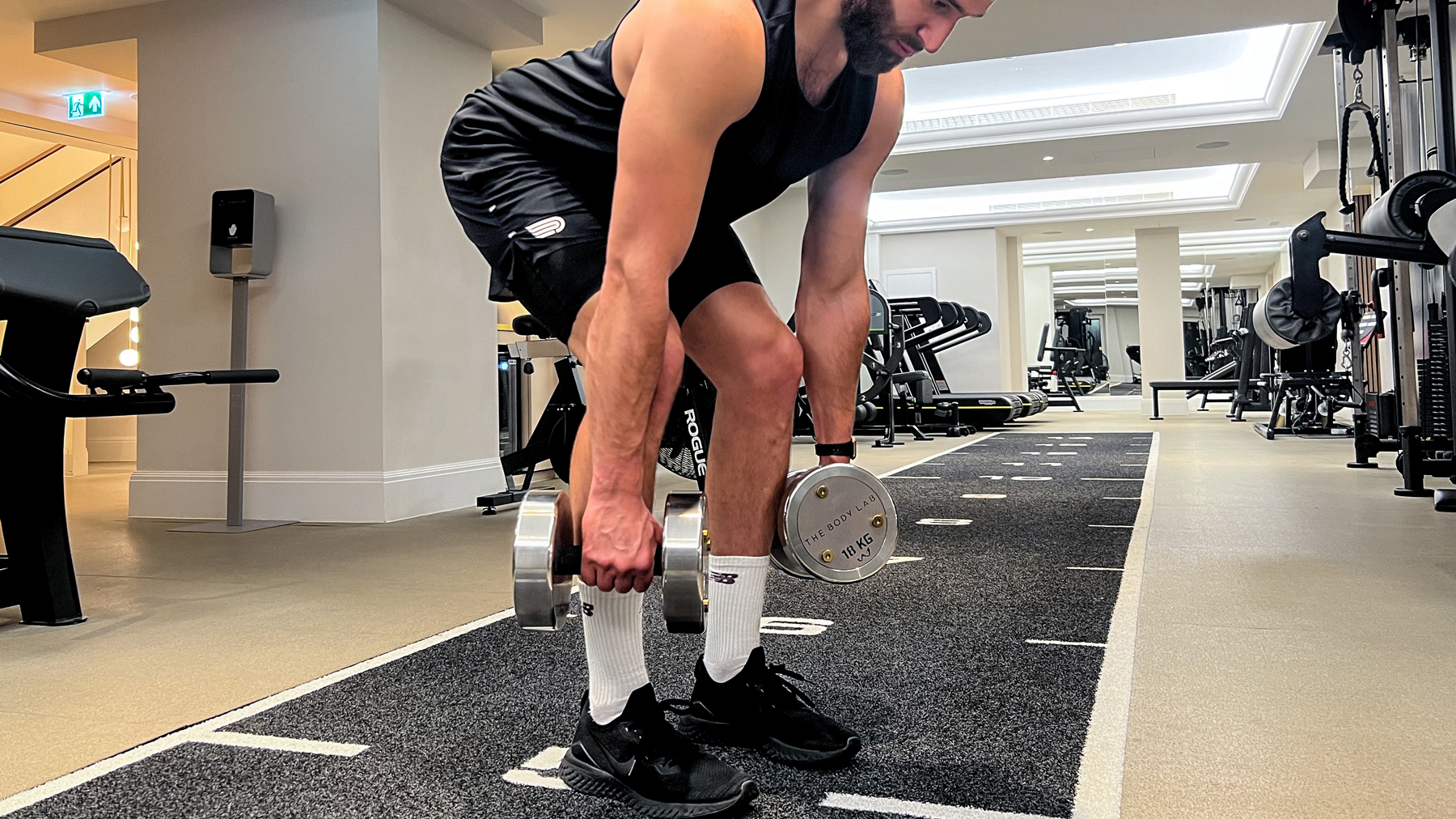

This is perhaps the toughest dumbbell row exercise of the three due to your lower back being slightly exposed with no support, says Sharma.
1) To perform it, drive your hip back far enough so your chest is almost parallel to the floor.
2) Your lats should be stretched when starting the exercise, then pull towards the hips and return to the start position with control.
“If you feel it in your lower back drive your hips back more so there is tension on your hamstrings and glutes,” Sharma advises. “They will protect your lower back and reduce the risk of your picking up an injury.”
On the lookout for more ways to perform classic exercises? Check out our article on how to do a push up properly. Or find out the answer to can you lose weight by lifting weights? And whether body weight vs free weights matters.
Lee Bell is a London-based journalist, copywriter, specializing in all things tech and lifestyle. He is also a qualified personal trainer. He started his journalism career a decade ago as a reporter covering the latest gadgets and innovations at tech tabloid The Inquirer. Lee went freelance in 2016 to broaden his expertise, moving into news, reviews and feature writing for a host of national print and online lifestyle titles such as GQ, Forbes, Esquire, Men’s Health, Wired, The Metro, and The Mirror. He has an insatiable appetite for travel, Dharma yoga, and the odd outdoor challenge.

